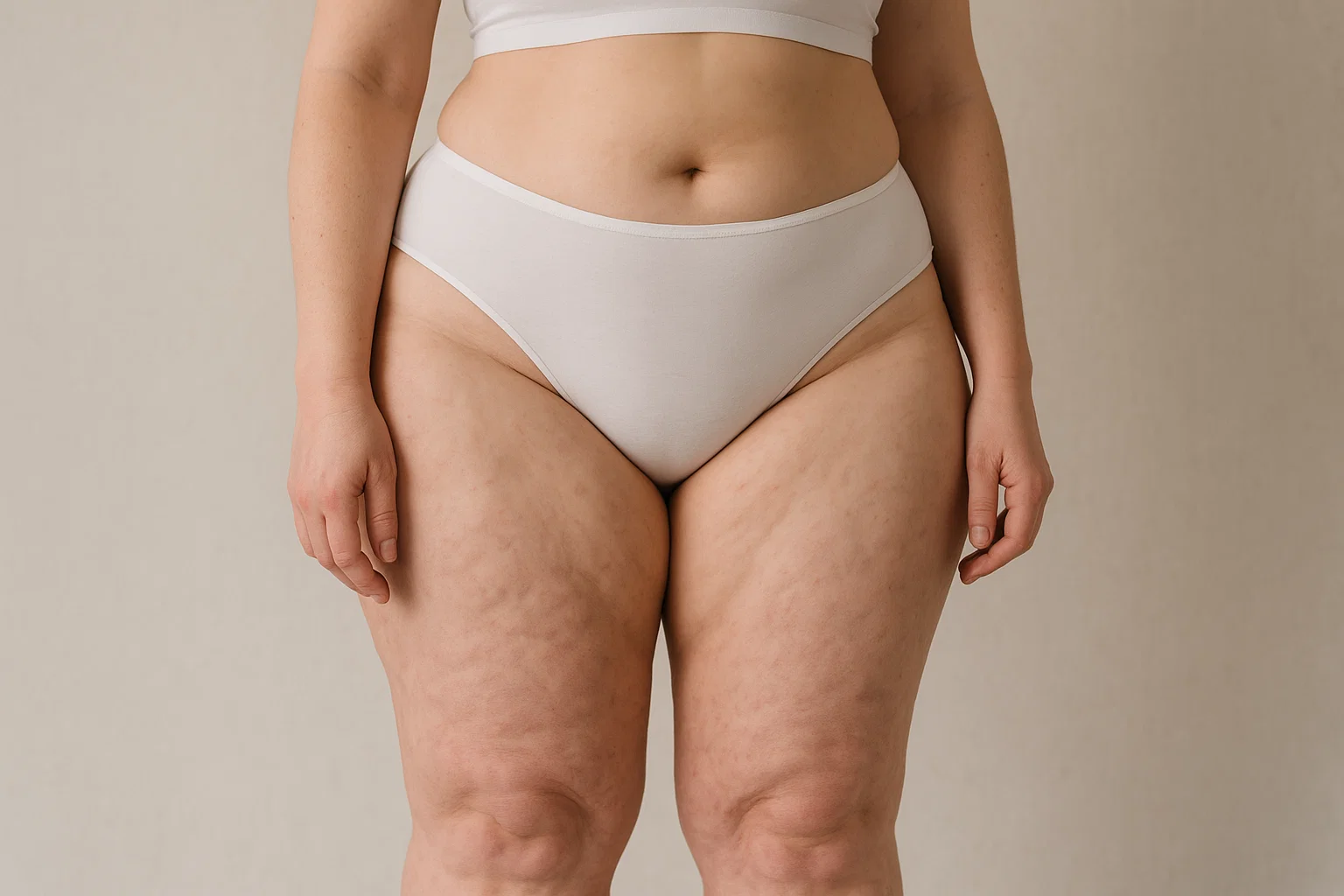Lipedema treatment - finally being understood. Act at last.
Our lipoedema treatment begins with empathy and does not end with treatment - but with real quality of life.
What is lipoedema and how does it manifest itself?
Lipoedema – also known as lipalgia or, in medical terms, lipohyperplasia dolorosa – is a chronic condition in which painful fatty tissue accumulates unevenly in certain areas of the body, usually on the legs and hips. The affected areas react sensitively to pressure and often feel heavy or tense. Typically, this fat distribution is not proportional to the rest of the body and persists despite weight loss. In addition to physical complaints, many patients also suffer from psychological stress due to pain, restricted movement and an altered body image.
Why is lipoedema so often misdiagnosed?
Lipoedema is often mistaken for obesity or lymphoedema. While obesity is about an even distribution of fat, lipoedema affects specific areas of the body – regardless of general weight. Swelling disorders such as lymphoedema also show similar symptoms, but the causes and treatments differ significantly. As a result, many sufferers are not treated properly for years and feel misunderstood. However, lipoedema is an independent, often misunderstood disease that requires specialized knowledge and individual care.
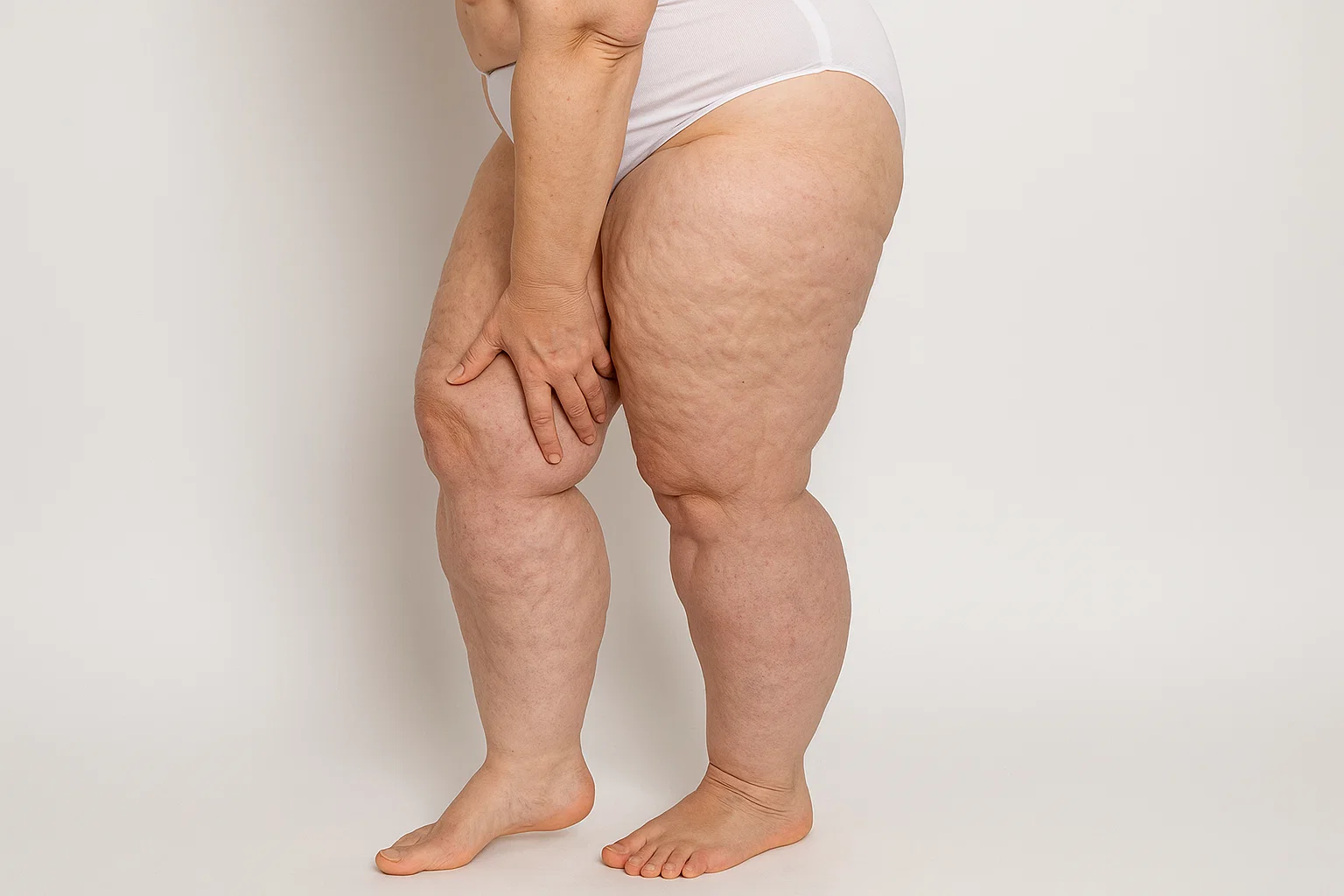

What can we do for you if lipoedema is suspected?
In our practice, we focus on your symptoms and your quality of life. If you suffer from heavy, aching legs, tenderness or an unusual distribution of fat, we will clarify together whether you have lipoedema. We will take time to listen to your history, your symptoms and your questions. On this basis, we develop a customized treatment plan that includes both conservative methods such as compression therapy and modern tissue reduction procedures. Our aim is to alleviate your symptoms in the long term and help you to improve your well-being and quality of life – competently, sensitively and individually.
How common is lipedema?
Lipoedema is surprisingly common but not widely known. The exact prevalence is The
Published estimates of prevalence vary between 1 in 72,000 and 1 in 1,000.

Classification of lipedema types
Lipoedema is real - and we take your symptoms seriously. We accompany you on your way to a new body image.
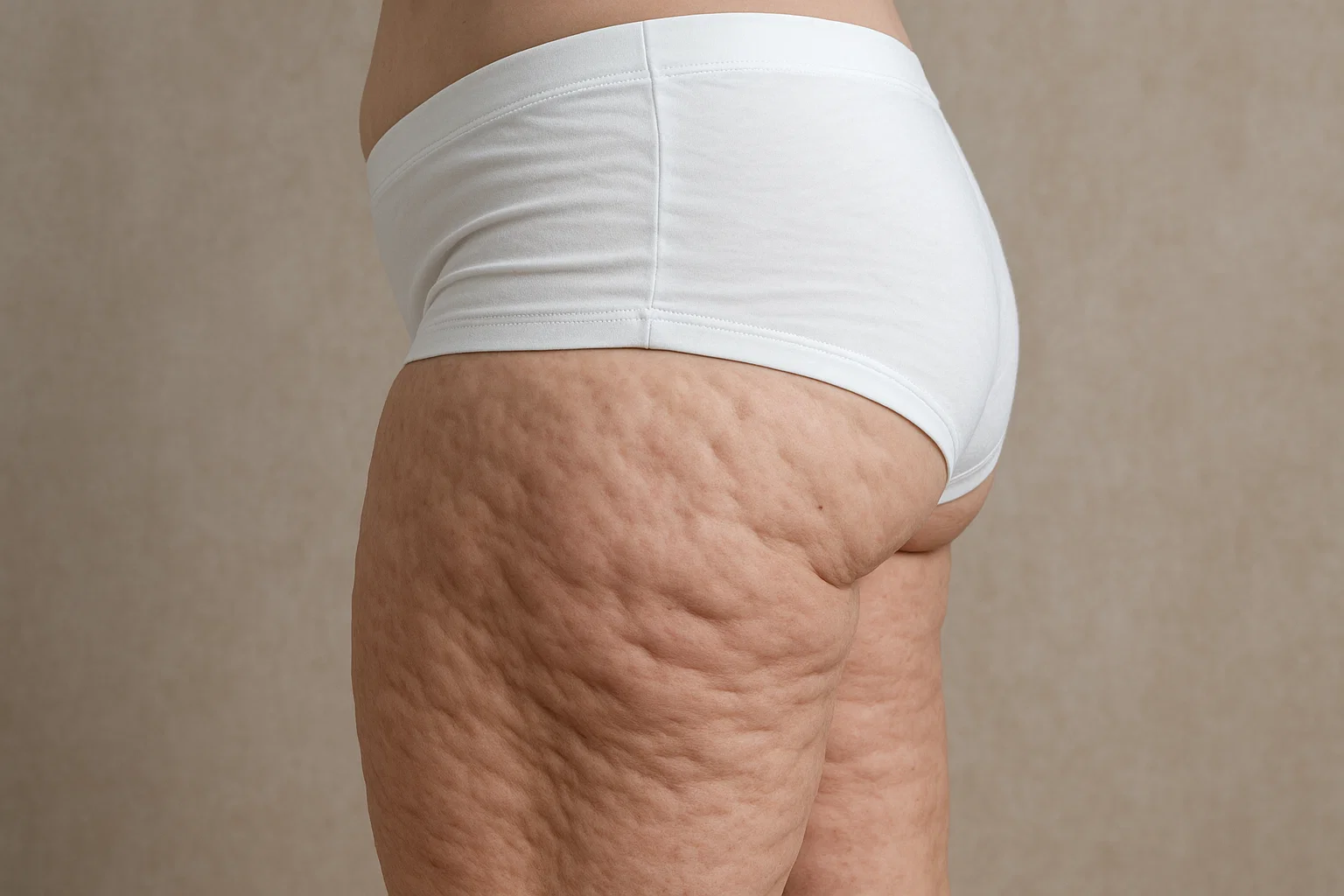
Type II: Lipedema extends to the knees
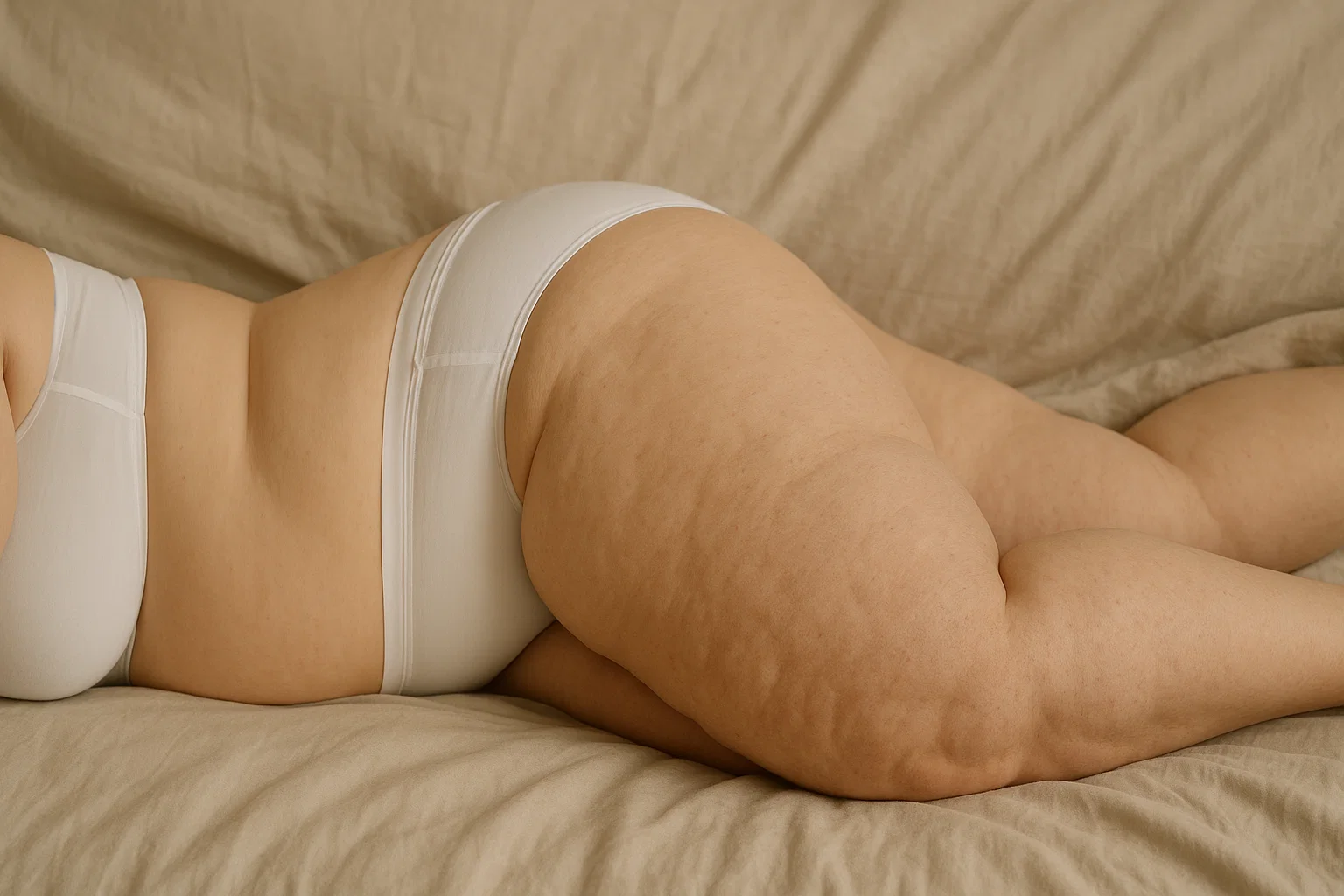
Type III: The entire legs from the hip to the ankle are affected
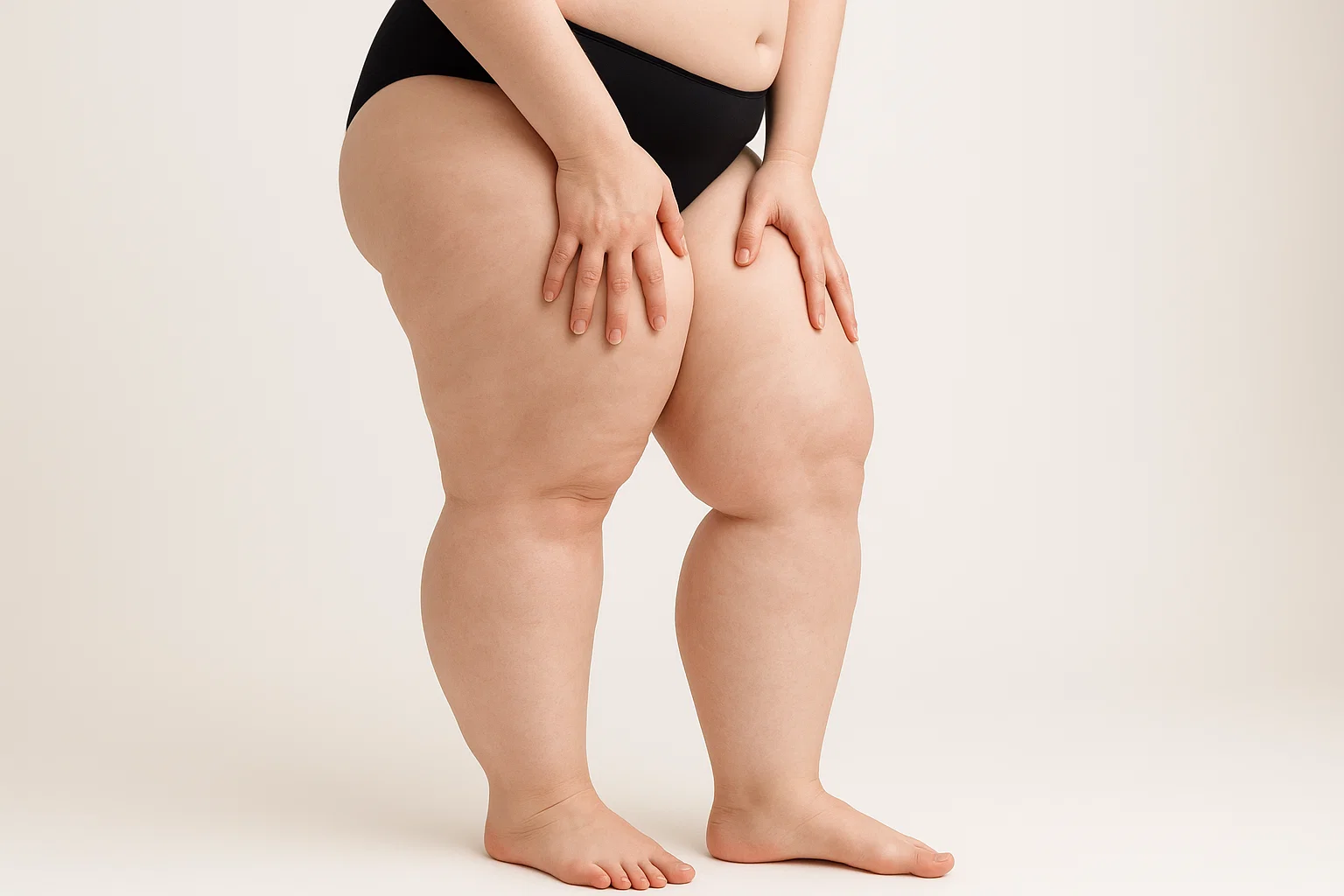
Type IV: The legs and arms are affected
How does lipedema develop over time?
If lipoedema is not recognized or treated, it can worsen over years – especially if additional factors such as obesity, stress, depression or hormonal changes are added.
With larger fat deposits, lymph fluid can accumulate in the tissue, leading to so-called lipo-lymphedema. This condition impedes the drainage of tissue fluid and can cause additional health problems in the long term.
How does lipoedema develop - and why are almost only women affected?
The exact cause of lipoedema has not yet been conclusively clarified. However, there appears to be a strong genetic predisposition: In around 15% of patients, there is already evidence of a family history. Hormonal factors – such as puberty, pregnancy or the menopause – also appear to play a role in the development.
In rare cases, lipedema can also occur in men with hormonal disorders or liver disease.
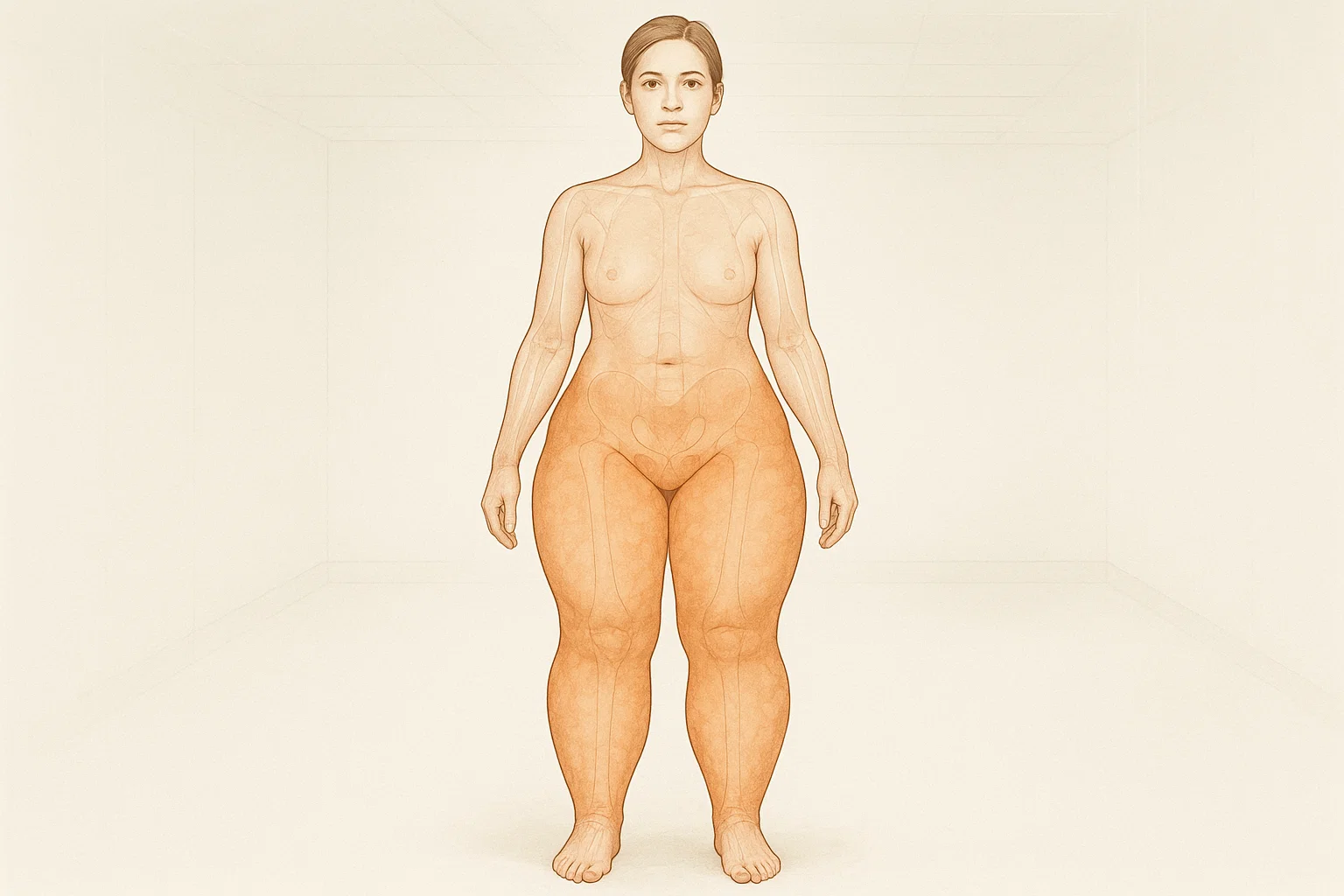
What are the symptoms of lipoedema?
Painful fatty tissue that is sensitive to pressure
Spontaneous pain without a recognizable cause
Increased tendency to bruising (hematomas)
Loss of skin elasticity
Feeling of heaviness and tension in the legs
Psychological stress due to pain and body changes
In later stages: fluid accumulation (lipo-lymphedema)
What can I do if I suspect I have lipoedema?
If you notice the symptoms mentioned – such as painful fatty tissue, disproportionate fat distribution or tenderness – we recommend that you consult a specialist.
In our practice, we will advise you in detail and assist you in making a diagnosis. Together we will develop an individual treatment plan to alleviate your symptoms and improve your quality of life.


